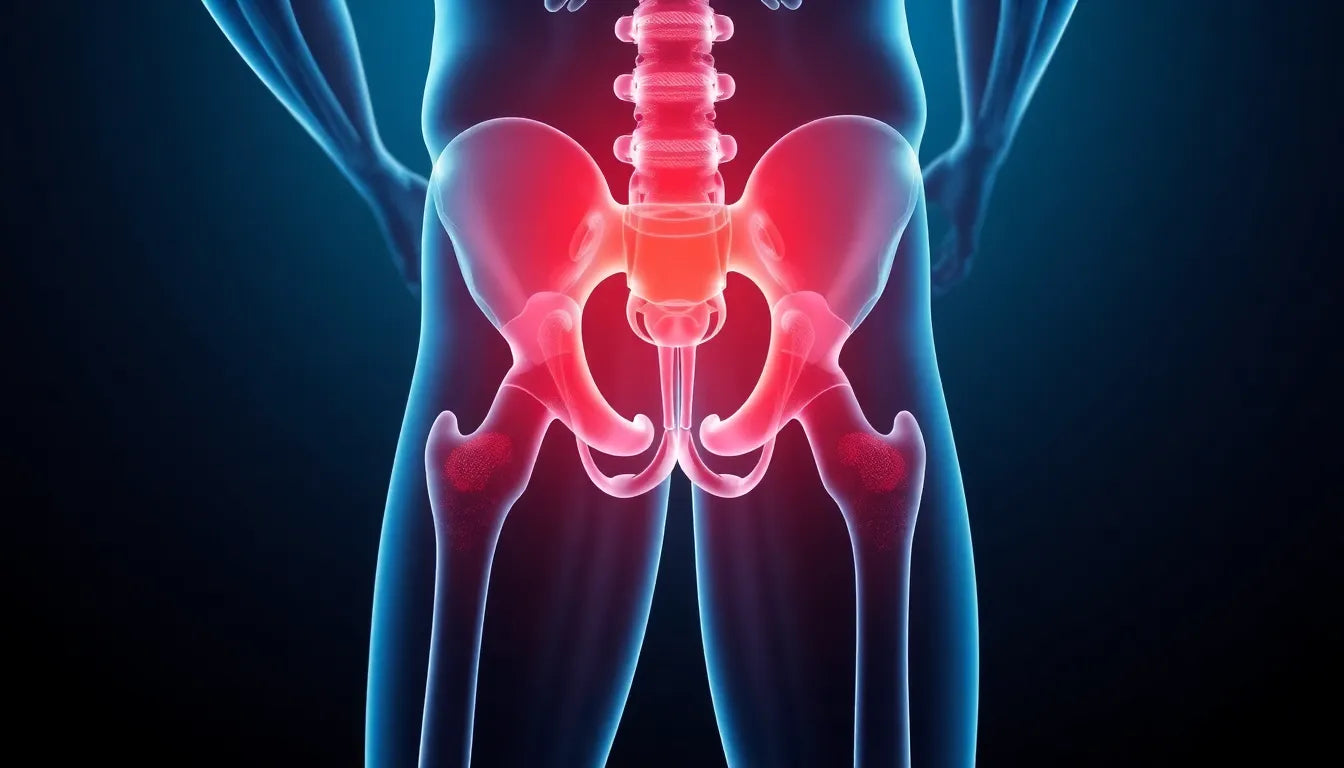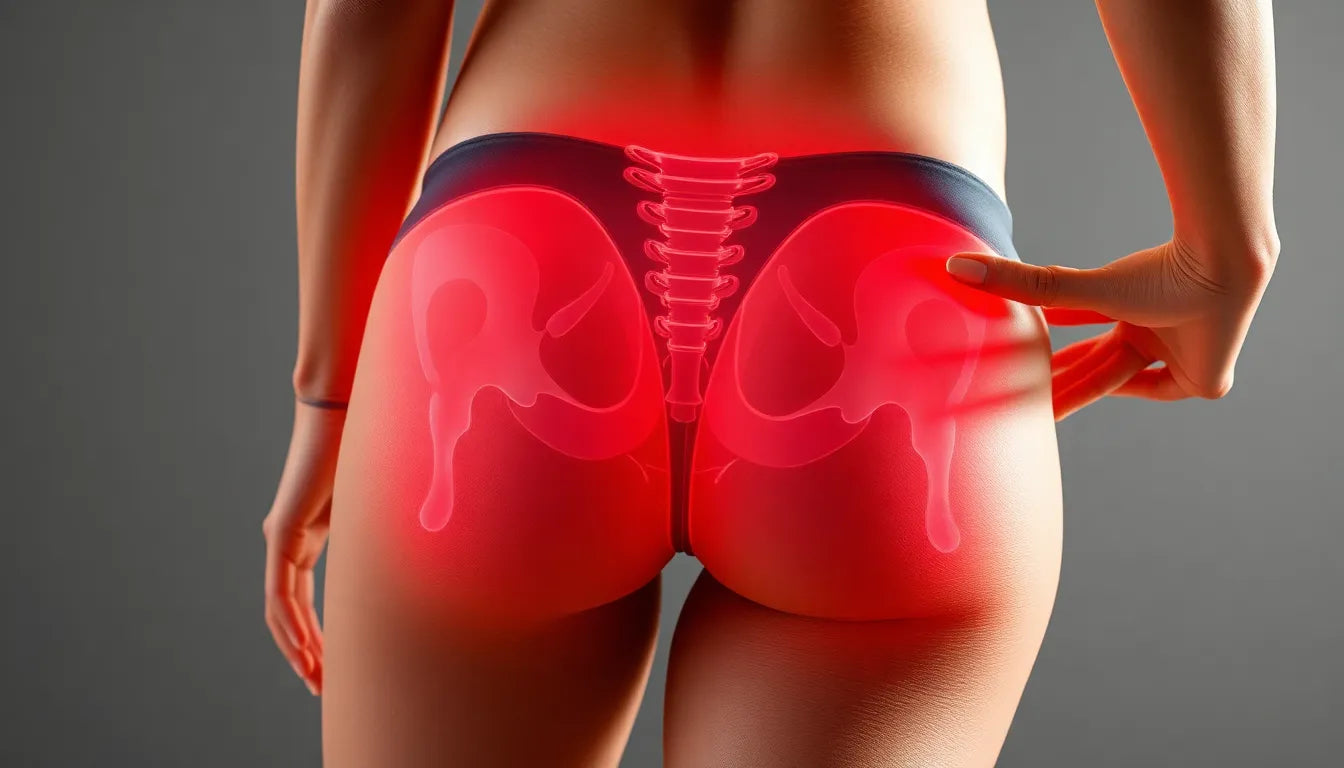Hip flexor pain is a common issue that affects many individuals, manifesting as discomfort at the front of the hip or groin. This pain is primarily due to problems in the hip flexor muscles, which include the psoas, iliacus, and rectus femoris. These muscles play a vital role in everyday movements such as lifting the knee and bending at the waist, making it essential to address any pain that arises in this area. Ignoring hip flexor pain can lead to difficulties in performing simple daily activities, highlighting the importance of effective pain management strategies.
why hip flexor pain is so common
The prevalence of hip flexor pain can be attributed to various lifestyle factors, particularly the sedentary habits that have become increasingly common in modern society. Prolonged sitting, whether at a desk or during long commutes, can lead to tightness or weakness in the hip flexors. This not only increases the risk of developing pain but can also exacerbate existing issues. As these muscles become tight and inflexible, the likelihood of experiencing discomfort grows, making it imperative to incorporate regular movement and stretching into daily routines.
In addition to those with sedentary lifestyles, active individuals are also at risk of hip flexor pain. Athletes, such as soccer players and runners, place a high demand on these muscles due to the nature of their sports, which often involve repetitive movements and sudden changes in direction. This constant strain can lead to overuse injuries, making it crucial for athletes to implement preventive measures and proper warm-up techniques to protect their hip flexors.
Understanding the causes and prevalence of hip flexor pain is the first step in addressing this common issue. By recognizing the importance of these muscles and the impact of lifestyle choices, individuals can take proactive steps to manage and prevent pain, ensuring they maintain an active and comfortable lifestyle. Whether through regular stretching, strengthening exercises, or ergonomic adjustments, there are numerous strategies available to help say goodbye to hip flexor pain.
recognizing symptoms and getting a diagnosis
Hip flexor pain can manifest in various ways, and identifying these symptoms early can help in managing and treating the condition effectively. The most common symptom is pain located at the front of the hip or groin, which typically worsens with physical activity. This discomfort can be accompanied by difficulty walking, limping, and noticeable muscle weakness. In some cases, individuals may also experience swelling, tenderness, and bruising around the affected area.
Diagnosing hip flexor pain usually begins with a clinical evaluation, where a healthcare professional will review your medical history and conduct physical tests to assess the extent and nature of the pain. In more severe or persistent cases, imaging tests such as X-rays or MRIs might be employed to rule out other conditions and confirm the diagnosis. Early and accurate diagnosis is crucial for developing an effective treatment plan, allowing individuals to return to their normal activities as soon as possible.
understanding causes and identifying risk factors
Several factors can contribute to the development of hip flexor pain. Acute strains often occur from sudden movements such as kicking, sprinting, or falls, which place an immediate and intense demand on the hip flexor muscles. Overuse is another common cause, particularly in activities that involve repetitive motions like cycling, running, or dancing. These activities can lead to micro-tears in the muscles over time, resulting in pain and discomfort.
A sedentary lifestyle also plays a significant role in hip flexor pain. Prolonged periods of sitting can cause muscle imbalances, leading to tightness and weakness in the hip flexors. This is particularly problematic for desk workers or individuals who spend a lot of time seated without regular breaks to stretch and move. Athletes and individuals with physically demanding routines are considered high-risk groups due to the constant strain placed on their hip flexor muscles.
effective treatment and management strategies
Managing hip flexor pain effectively often begins with self-care strategies. The RICE method—Rest, Ice, Compression, and Elevation—is a widely recommended approach for initial pain management. Resting the affected area, applying ice packs, using compression bandages, and elevating the leg can help reduce swelling and alleviate pain. Over-the-counter anti-inflammatory medications, such as ibuprofen, can also be beneficial in managing pain and inflammation.
For more persistent or severe cases, professional interventions may be necessary. Physical therapy is a common treatment option, focusing on stretching and strengthening exercises to restore flexibility and muscle balance. In rare instances, where there is a complete muscle rupture or conservative management fails, surgery might be considered. Working with a healthcare professional to develop an individualized treatment plan is crucial for effective recovery.
prevention strategies to keep hip flexor pain at bay
Preventing hip flexor pain involves adopting daily practices that promote muscle health and flexibility. Regular stretching and strengthening exercises are essential for maintaining the flexibility and strength of the hip flexors. Incorporating a proper warm-up routine before engaging in physical activities can help prevent strains and injuries.
For individuals with sedentary lifestyles, it's important to avoid prolonged sitting and to maintain good posture. Regular breaks to stand, stretch, and move around can significantly reduce the risk of developing hip flexor pain. Additionally, ergonomic adjustments in the workplace, such as using sit-stand desks and ergonomic chairs, can help prevent muscle imbalances and discomfort.

Lumbar support belt
Provides adjustable, targeted relief for lower back pain and stabilises the lumbar during daily activities.
visual guide to preventive exercises
Incorporating preventive exercises into your routine can be highly beneficial in maintaining hip flexor health. Stretches such as the kneeling hip flexor stretch and the seated butterfly stretch can help improve flexibility. Strengthening exercises, like lunges and leg raises, can enhance muscle strength and balance. Visual guides, including diagrams or videos, can be particularly helpful in ensuring proper form and technique during these exercises, maximizing their effectiveness and reducing the risk of injury.
long-term management of hip flexor pain
Managing hip flexor pain effectively involves not only addressing immediate symptoms but also implementing long-term strategies to prevent recurrence. One of the key components of long-term management is the incorporation of ergonomic solutions, particularly for individuals who spend significant time sitting at desks. Ergonomic aids can play a pivotal role in reducing strain on the hip flexors, thereby minimizing the risk of pain.
For desk workers, utilizing sit-stand desks can be particularly beneficial. These desks allow for alternating between sitting and standing throughout the day, which helps reduce the amount of time spent in a static seated position. This variation in posture can prevent the tightening of the hip flexors that often results from prolonged sitting. Additionally, ergonomic chairs that provide proper lumbar support can help maintain a good posture, further alleviating stress on the hip flexors.
Incorporating regular movement into your daily routine is equally important. Taking short breaks to stand, stretch, or walk around can significantly contribute to maintaining flexibility and preventing tightness in the hip flexor muscles. Simple exercises, such as standing hip flexor stretches or gentle lunges, can be performed throughout the day to keep the muscles engaged and healthy.
For athletes and active individuals, incorporating a comprehensive warm-up routine before engaging in physical activities is crucial. This routine should include dynamic stretches that specifically target the hip flexors, preparing them for the demands of sports or exercise. Additionally, focusing on strengthening exercises that promote muscle balance and flexibility can enhance performance and reduce the likelihood of injury.

Men's Posture Shirt™ - Black
Patented shirt activates muscles, improves posture and relieves pain during work, exercise or leisure.
frequently asked questions
What are the signs that I should see a doctor for hip flexor pain?
If you experience persistent pain despite home treatment, severe pain, or an inability to move the hip, it's advisable to seek medical consultation. These symptoms may indicate a more serious underlying issue that requires professional evaluation.
Can hip flexor pain be completely cured?
With appropriate treatment and preventive measures, many individuals can significantly reduce or eliminate hip flexor pain. It is essential to follow a comprehensive management plan that includes both immediate relief and long-term prevention strategies.
Are there specific sports to avoid if I have hip flexor pain?
Activities involving repetitive hip movements, such as running or soccer, should be approached cautiously. Proper warm-up routines and gradual progression in activity levels are recommended to prevent exacerbating the pain.
How long does it typically take to recover from hip flexor pain?
Recovery time varies depending on the severity of the strain. Mild strains may heal in a few weeks with appropriate care, while more severe cases could take longer, especially if surgical intervention is needed. Adhering to a tailored recovery plan can help expedite the healing process.
Kilder
- Jon Dickens MD. "Hip Flexor Pain Specialist Raleigh Durham Cary."
- Hollywood Presbyterian. "Understanding Hip Flexor Pain."
- Cary Orthopaedics. "Hip Flexor Pain."
- Healthline. "Hip Flexor Strain."
- Sports Health. "Causes of Hip Flexor Pain."
- OIB Ortho. "Hip Flexor Pain."
- Cleveland Clinic. "Hip Flexor Strain."
- UChicago Medicine. "Hip Care."
- Mount Sinai. "Hip Flexor Strain Aftercare."


















